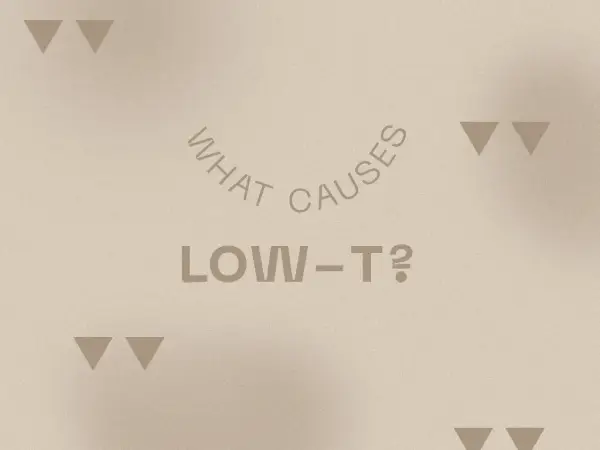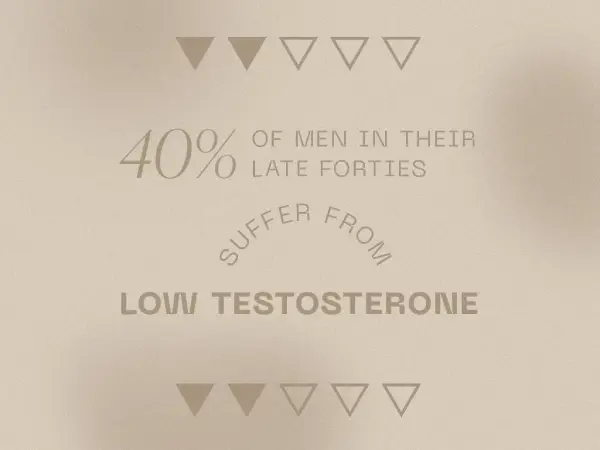Blog
Men’s Health and Low Testosterone – The Truth About Low Testosterone Levels

Anytime someone mentions testosterone, most of us think of bulging muscles and raw masculinity. And rightly so, since testosterone fuels muscle mass and libido.
But testosterone is better than that. It also regulates bone density, mood, physical appearance, and a man’s overall sense of well-being.
While having an adequate supply of this hormone is important, nearly 40 percent of men in their late forties and over suffer from low testosterone.
Low testosterone (Low-T) occurs when the male reproductive glands fail to produce enough testosterone, resulting in physical and emotional changes, among other issues.
Today we’ll be exploring the truth about low testosterone levels in men.
A Brief Look at Testosterone
Male fetuses start producing testosterone as early as eight weeks following conception. The effects of this male hormone kick in as boys enter puberty and peak in their late teen years.
Boys develop manly features like deepening voice, body and facial hair, and muscle strength. It also facilitates sexual development and functions, including producing sperm.
When a man hits 30, his testosterone levels start to naturally decline at approximately one percent every year for the rest of his life.
This doesn’t mean that he automatically has Low-T, rather, that the testes are producing less testosterone than they did while he was a teen.
So how low is low testosterone?
According to the American Urology Association, blood testosterone that’s lower than 300 nanograms per deciliter can be identified as low testosterone.
What Causes Low-T?
Many people believe that only older men experience low testosterone, but this condition can occur at any age for various reasons.
Reasons of “Low T” clinically has been seen through inflammation (cardiac, stress, nutrition/diet, chronic conditions, or mental/work stress) The body is innate and will not produce testosterone if the body isn’t ready to procreate. If the body is in a chronic state of fight or flight (sympathetic tone) – testosterone will naturally decrease + due to effects of the cortisol shunt pathway.
Here are potential causes of Low-T:
- Acute short-term illnesses as well as chronic (long-term) conditions.
- Alcohol abuse
- Chemotherapy for cancer
- Congenital defects
- Chronic renal (kidney) failure
- Delayed puberty
- Dysfunction of the pituitary gland
- Infection of the testes
- Extreme weight loss
- Excess estrogen coming from an external source
- Klinefelter syndrome where males are born with an extra X chromosome
- Obesity
- Previous anabolic steroid abuse
- Trauma (injury to the head or one that interrupts supply of blood to the testes)
Signs of Low Testosterone
There is a wide range of symptoms associated with Low- T.
Some are directly connected to the condition while others may or may not be related to it. Your doctor will analyze the symptoms to accurately diagnose your situation.
Some key signs and symptoms of low testosterone that Dr. Jason Phan has seen clinically is what he likes to call “loss of MOJO”. Testosterone drives men’s confidence, executive function, drive, and motivation. Without these key items in a mans life – self esteem will plummet. Other key symptoms to tease out is libido or sex urge/drive,
Specific symptoms of Low-T include:
- Breast development
- Depression
- Erectile dysfunction
- Fatigue
- Irritability
- Loss of body hair and reduced beard growth
- Low libido
- Obesity
- Reduced lean muscle mass
Symptoms that may show up but aren’t necessarily connected to low testosterone include:
- Difficulty speaking
- Poor memory
- Inability to focus or concentrate at work
- Reduced energy levels
- Osteoporosis
Having one of these symptoms (whether they are directly associated with Low-T or not) may not translate to low testosterone.
But if you experience several of them, like feeling constantly tired, being irritable, and unable to concentrate, you might want to get that checked.
Diagnosis & Treating Low Testosterone
A person’s testosterone levels fluctuate throughout the day. To reach a conclusive diagnosis, the physician will measure the testosterone in your blood several times.
Testosterone levels are typically higher in the mornings, which makes this a preferable time for taking the measurements.
If the results show that the hormone level is low, the physician may recommend testosterone replacement treatment.
Therapy is administered in one of the following ways:
- Intramuscular injections given every 10 – 14 days
- Implanting pellets under the patient’s skin every two months
- Applying testosterone gels daily on the patient’s upper back and arms. The areas should be cleaned and dried thoroughly before application. Plus, care should be taken to ensure other people don’t come into contact with the gel.
- Applying testosterone patches daily to your arms, abdomen, back, and buttocks.
Before testosterone therapy commences, the doctor will conduct a Hematocrit levels check to ensure the red blood cell levels are normal.
They will monitor these levels regularly after you start therapy to ensure they remain normal.
Benefits of Testosterone Replacement Therapy
In boys, testosterone replacement therapy may help avoid problems associated with delayed puberty.
Potential benefits for adults include:
- Better sense of well-being
- Better mental clarity and focus
- Improved muscle strength along with physical performance
- Loss of fat
- Increased bone density
- Lower risk of osteoporosis
- Improved libido
Testosterone Replacement Therapy Side Effects
Some patients may experience:
- Breast tenderness
- Acne or oily skin
- Difficulty urinating following stimulation of the prostate
- Sleep apnea
- Skin irritation in patients using topical treatment
- Mild fluid retention that causes swollen ankles
Once you start therapy, it will be important for you to attend follow-up appointments with your physician.
You can discuss your progress and any side effects you’re experiencing. They, in turn, may request laboratory tests and conduct physical examinations to check for abnormalities.
Is Testosterone Replacement Therapy for Everyone?
Testosterone replacement therapy has the potential to grow the prostate, which may trigger the growth of cancer cells. For this reason, the treatment is not recommended for prostate cancer patients
The doctor will conduct prostate screening before putting a patient on testosterone replacement therapy to rule out prostate cancer.
Men who have the following conditions should also avoid hormone replacement therapy:
- Elevated red blood cells levels
- Breast cancer
- An enlarged prostate that causes difficulty in urinating
- An unevaluated lump on their prostate
- Untreated obstructive sleep apnea
- Severe congestive heart failure
- A PSA (prostate-specific antigen) measurement above 4
Low-T Prevention
Presently, there are no known ways of preventing low testosterone caused by genetic conditions or damage to the testes.
However, doctors indicate that healthy lifestyles that follow good nutrition, exercise, and minimized alcohol intake can help maintain normal testosterone levels.
If you’re concerned about Low-T levels or are considering testosterone replacement therapy talk to us. Livv Naturals has experienced specialists on hand to help you handle this condition.


